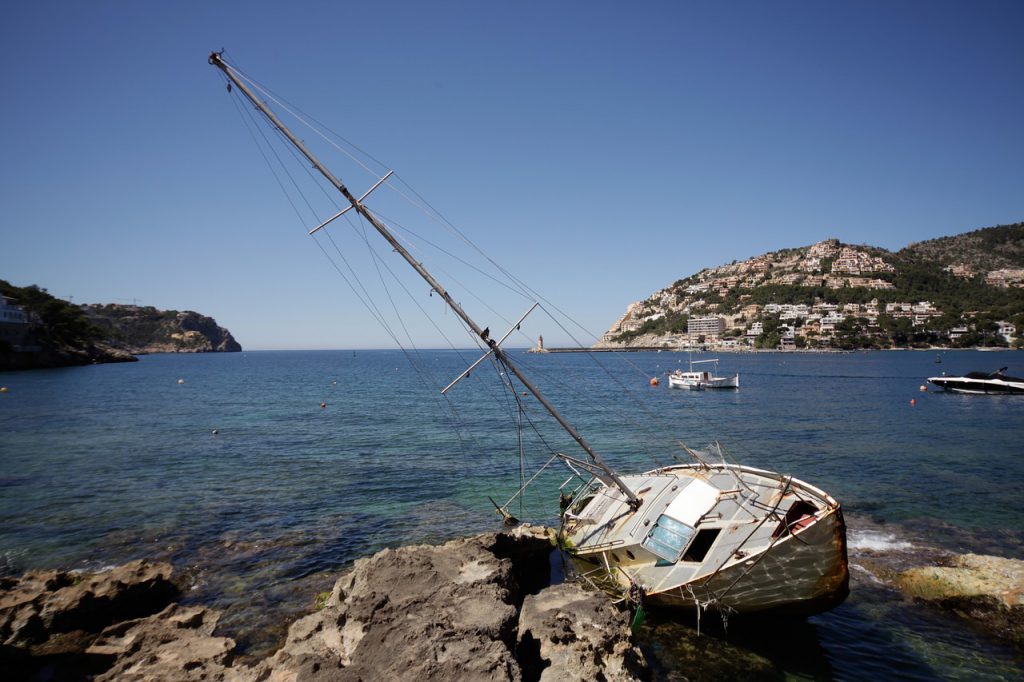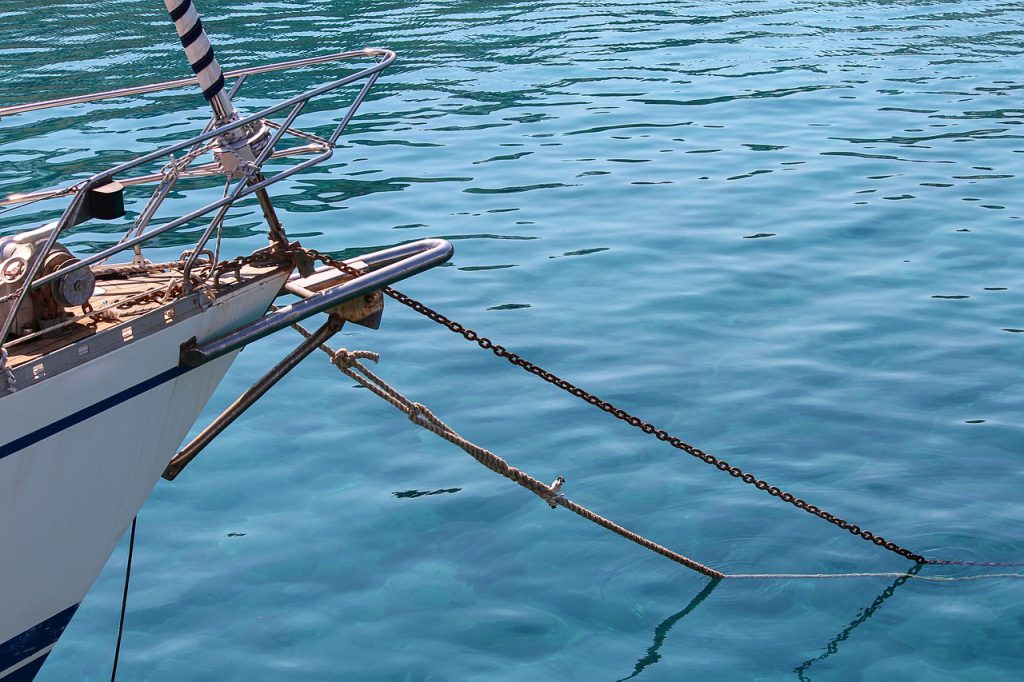How to Anchor Your Boat
January 20th, 2020 by inavx
by B.J. Porter (Contributing Editor)
A good night’s sleep on a boat is a pleasure away from a dock or mooring if you can anchor your boat so it stays. Assuming you’ve got good ground tackle, there are three main points to watch for when you are anchoring the boat: positioning, a good set, and proper scope.

Positioning for Success
Picking the right spot takes practice, and you have to learn how your boat swings and rides at anchor. Plan to drop anchor in a position that leaves you far enough from other boats that you won’t bump when the wind shifts and you can have a little privacy. When you’re learning how to anchor, don’t try to get too close to everyone unless there is no choice.
Pay attention to wind and current and the way boats are lining up in the anchorage. Look around to see how the situation will change if the wind shifts. A cozy anchorage in a southerly can turn into a nasty lee shore with a lot of fetch and waves in a northerly if you aren’t paying attention. Check the weather for the overnight and the morning.
When you pick a place to drop, estimate where you will end up when your rode stretches out and make sure that ends up with both swing room and room for the boats behind you. Don’t be afraid to re-set if you don’t end up where you expected.
Setting it Hard
There are a few ways to set an anchor, but our technique is to bring the boat to an almost stop close to the spot you want the anchor to rest on the bottom. Feed it out quickly and let the boat drift back in the wind. When you have two to three times the depth of water let out, let the boat drift back on the anchor until it the bow straightens into the wind. The person on the boat should keep a foot on the rode to feel for dragging and to know for sure when the anchor sets.
Once it sets, back down on it in idle until the rode is taught. Gradually increase the RPMs while checking the rode to make sure the anchor is setting, not breaking out. Finally, put the boat in neutral and let out the rest of the desired scope.

The Right Scope
It’s the chain and the length of rode that holds you, not the anchor. By the book, a rope rode should have a scope of seven feet of rode per foot of total depth. Total depth is not the depth at the time of anchoring, but the depth at high tide added to the height of the bow roller over the water. With an all chain rode four to one is an acceptable ratio. Always make sure that your scope is similar to the boats around you, if you’re at 7:1 and everyone else is at 4:1 in a crowded anchorage you may have problems if the wind shifts.
- Posted in Blog, Boat Care, Boating Tips, Cruising, iNavX, Navigation, Sailing, Sailing Tips
- 4 Comments
- Tags: Anchor, Anchoring, Boating, Boating Tips, Safety, Sailing


February 20, 2020 at 3:25 pm, Cara said:
A diagram or video clip (animated or real) would be helpful.
February 20, 2020 at 9:19 pm, Ian said:
Ah! I never thought to calculate for the high tide. Thank you!
February 21, 2020 at 1:03 pm, John Morfit said:
Why do you leave out one of the most important aspects of anchoring? Precedence. First to anchor has freedom to set configuration, position, and scope. Each boat anchoring later must avoid earlier boats, and if there is any problem, the late arrival must move to correct the problem.
May 01, 2020 at 5:58 pm, Neighborly Anchoring | iNavX said:
[…] in January we talked about how to anchor your boat for a good night’s sleep. But anchoring out is more than just dropping the hook so you’re […]